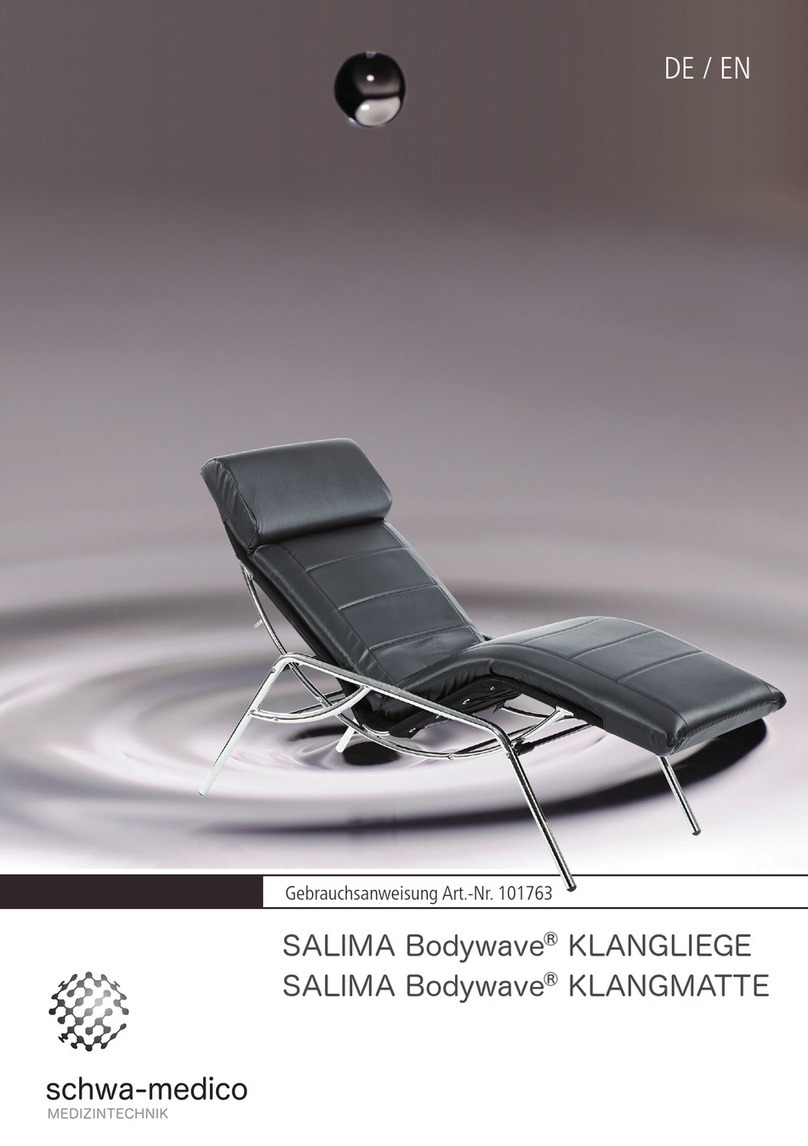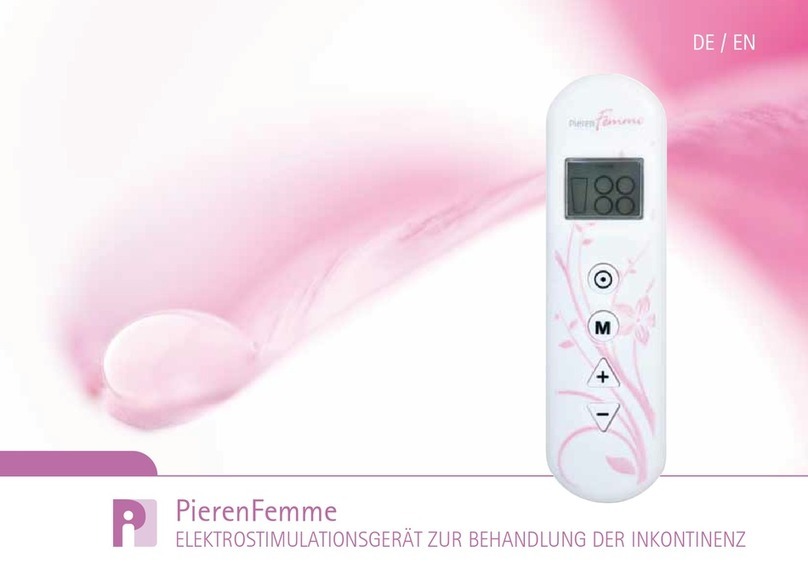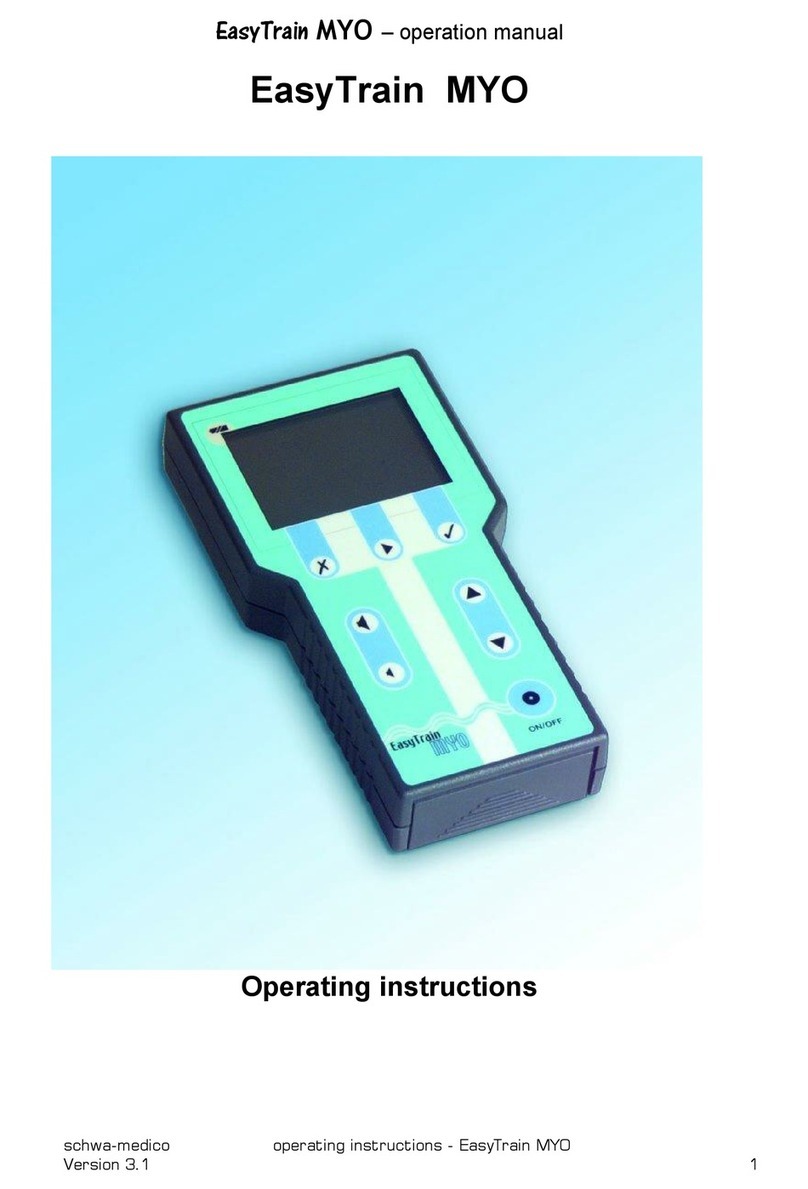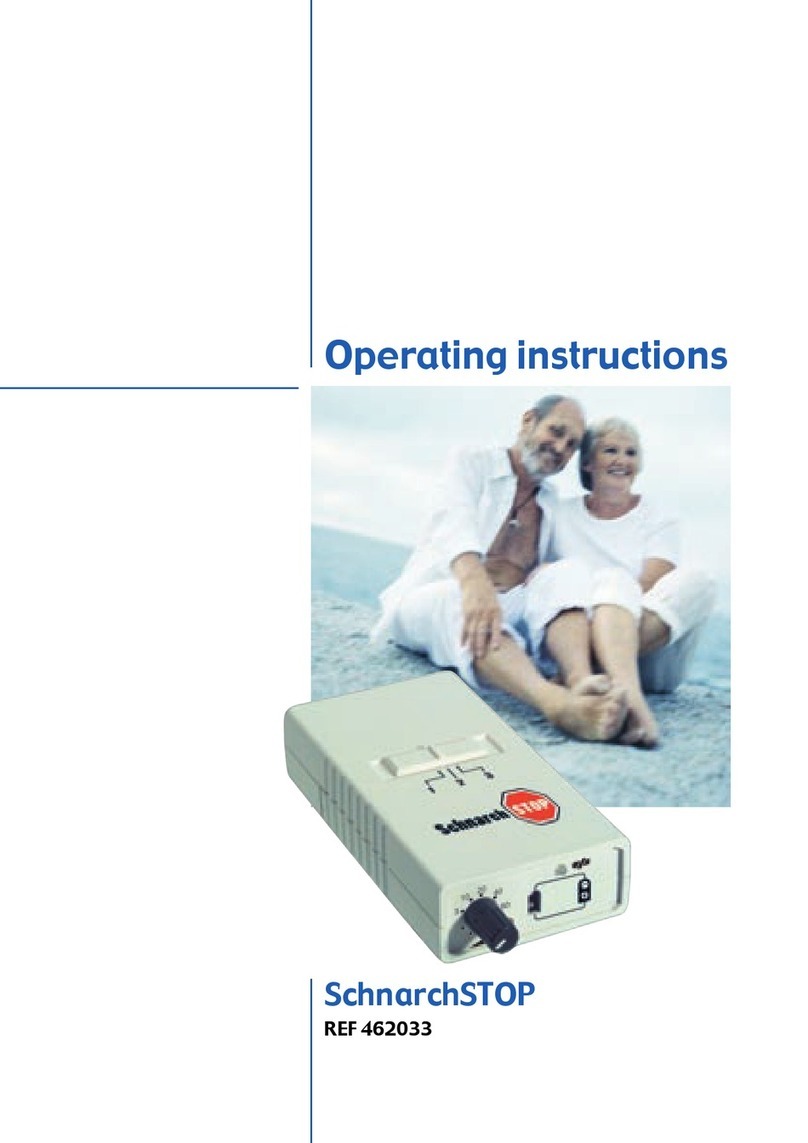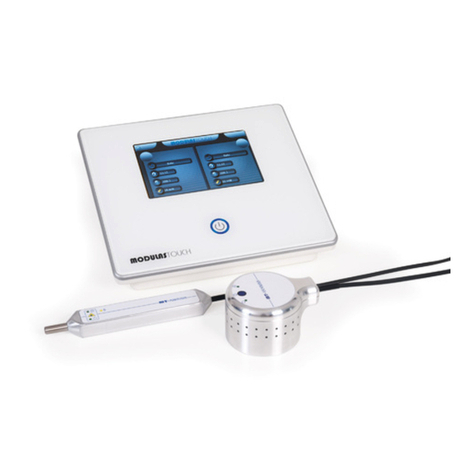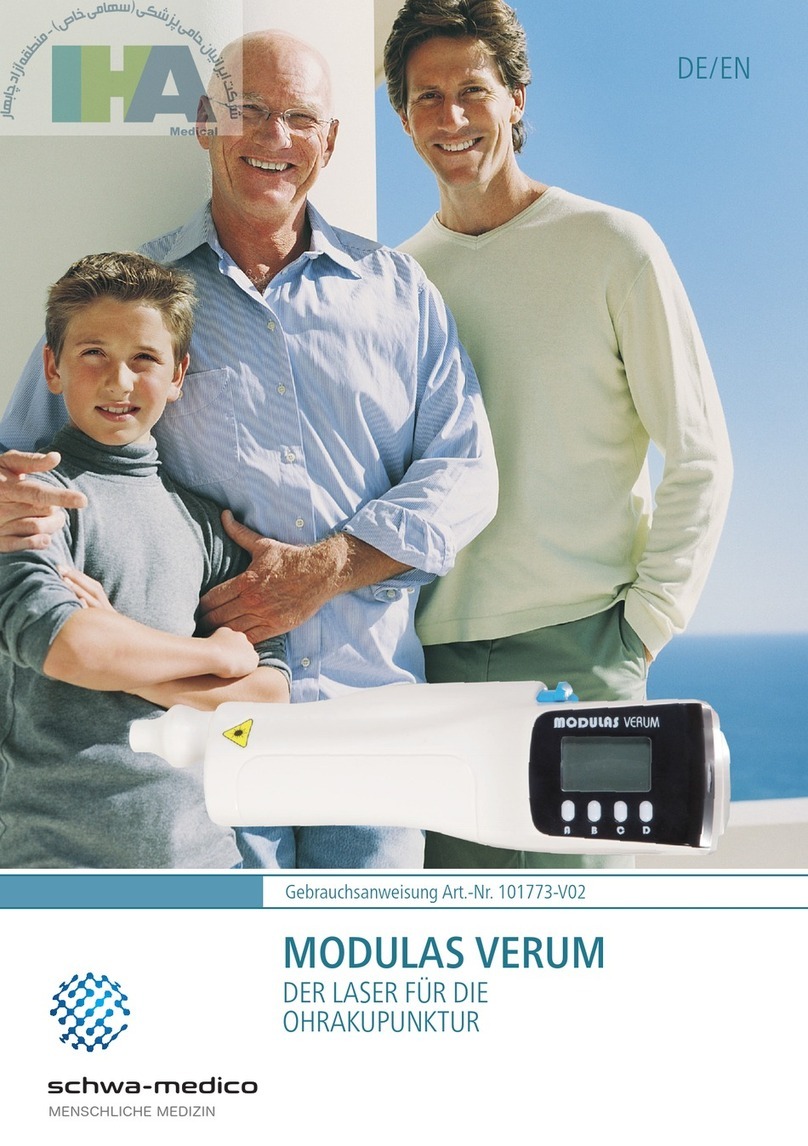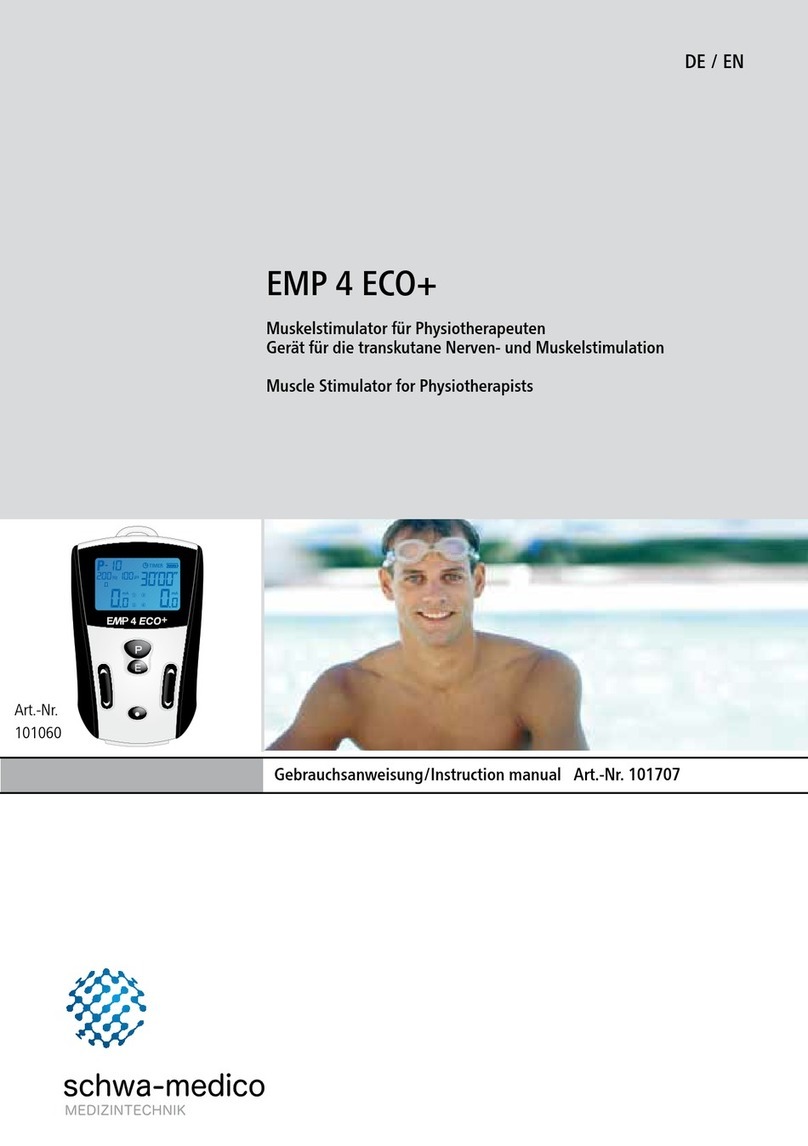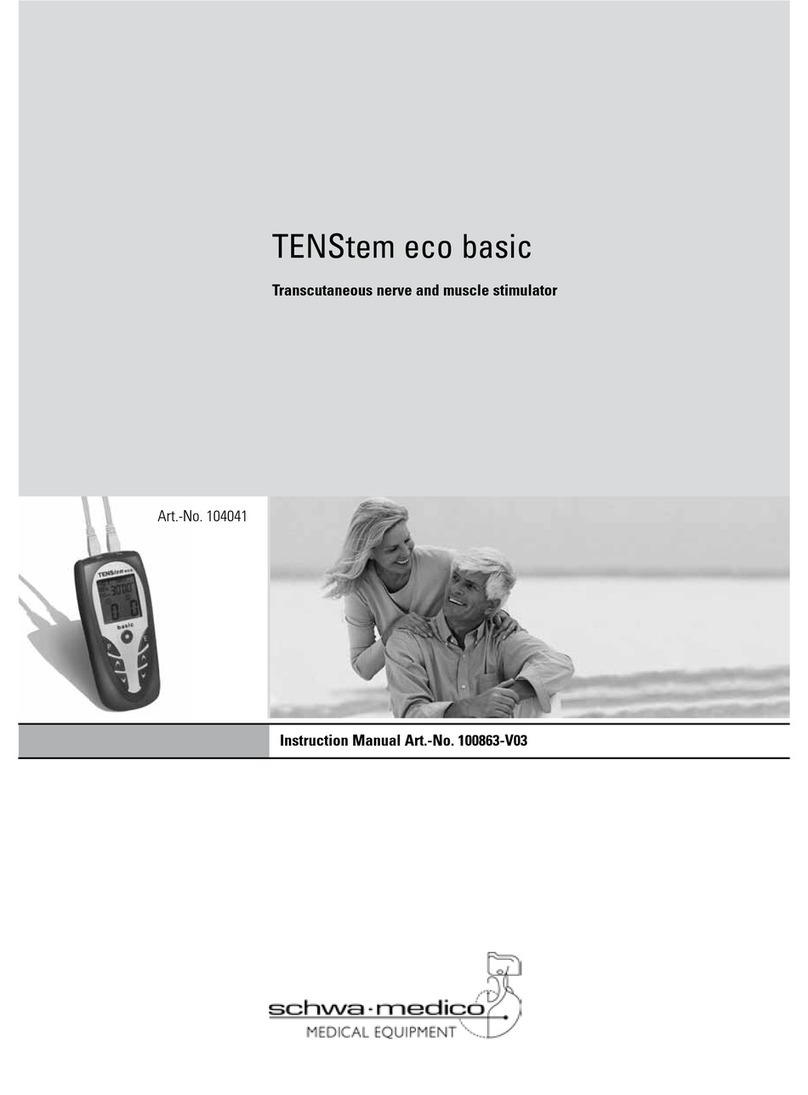
5
ENGLISH
1.2 Safety precautions
Please read the instructions for
use carefully prior to using the pro-
duct! Keep for future reference!
1Caution: Consult a physician be-
fore applying electrodes over or
through the head, directly on the
eyes, covering the mouth, on the
front of the neck, (especially the caro-
tid sinus), or from electrodes placed
on the chest and the upper back or
crossing over the heart.
Warning: Application of electrodes
near the thorax may increase the risk
of cardiac brillation. In case of elec-
trode placement in the thorax area,
intensive high frequency stimulation
(above approx. 15 Hz) may lead to re-
spiratory disorders during stimulation.
2Warning: It is not allowed to use
the product during operating machi-
nes or during operations which requi-
re elevated concentration. Especially
don’t use it while using a vehicle!
The stimulation in the face (trigeminal
nerve stimulation) can lead to sleepi-
ness. That’s why you should continue
the above-mentioned activities only if
you don’t feel sleepy anymore. For an
optimal security you should stimulate
in the face only while sitting or lying.
3Never use the product if it functions
incorrectly or has been damaged. If,
contrary to expectations, malfunctions
occur, please contact our service team
or your dealer. Technical checks and
repairs may only be performed by
qualied and authorised persons in
order to keep the safety and warranty
(addresses can be found on the last
page of the instructions for use).
Caution: If the product is modied,
appropriate examinations and tests
must be carried out to ensure conti-
nued safe use. Otherwise, it leads to
the loss of any guaranty and warranty.
4The product may only be used with
original accessories. The use of ot-
her accessories (especially of electro-
des with a smaller surface than 2 cm
2
)
may lead to a decient operation. The
electrodes in the delivery amount can
be used without worries.
5Keep the product away from water
and other liquids as this may cause
uncontrolled current ows, electric
shocks and damage to the product.
6Caution: Simultaneous connection of
a patient to a high frequency surgical
ME (medical electrical) equipment may
lead to burns beneath the electrodes
and it may damage the product.
7Caution: Operation in the vicinity
(e.g. 1m) of a short wave or microwave
ME device for shortwave or microwa-
ve therapy may cause uctuations in
the output value of the product which
may turn into painful results.
8Caution: Keep a distance of min. 30
cm (12 inches) between the parts and
the wires of this product and a high
frequency communication device (mo-
bile phone or a radio device including
their accessories such as antenna ca-
ble or external antenna). Non-obser-
vance may result in a reduction of the
device’s performance characteristics
and a decient operation.
9Caution: Do not use this device next
to or stacked with other devices, as
this may result in decient operation.
If, however, use in the manner descri-
bed above is still necessary, this device
and the other devices should be ob-
served to ensure that they are working
properly.
10 Do not allow the product to be drop-
ped and handled incorrectly. Only
use at temperatures between 5 °C and
35 °C, at a relative humidity between
30 % and 75 % and a pressure bet-
ween 70 kPA and 106 kPA. So do not
use the product e.g. in bathroom or
similar humid environments.

